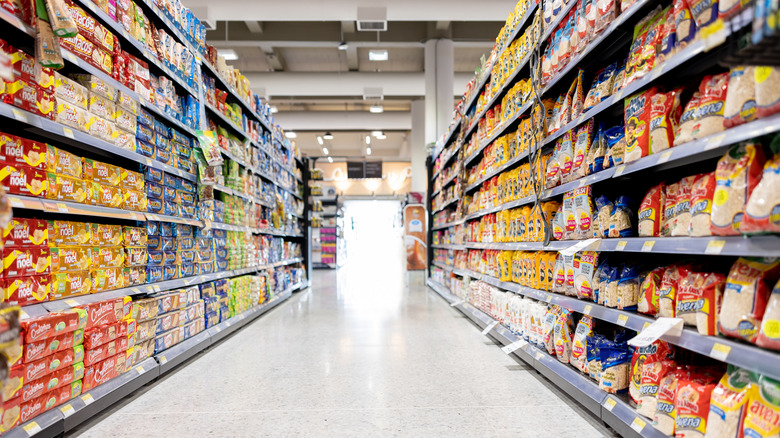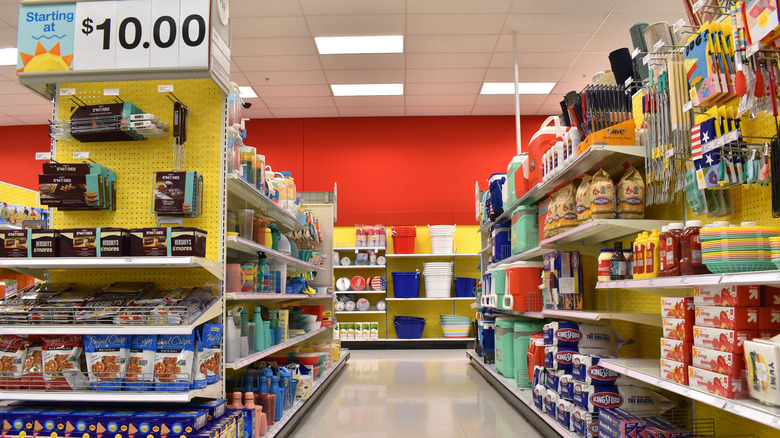Grocery Stores Rearrange Their Layout To Play Tricks On Your Wallet
Depending on where you live, what you eat, and what your budget is, grocery shopping can be either a fun excursion or a stressful quest. If you find that you always spend more money when grocery shopping than you intend to, it might be because stores are explicitly laid out to encourage you to buy as many items as possible. Even the most diligent of list-makers and coupon clippers can fall prey to these ploys, which use human psychology to trick you into purchasing more than you planned.
For example, grocery stores tend to arrange their products around the natural flow of traffic and put kitchen staples in hard to reach locations so that shoppers are more likely to spend more time inside and pass by more items as they search for what they came in for originally. But, if you know some of these tricks, it might help you to avoid wasting money on things you don't need.
Grocery stores often hide the basics
Have you ever noticed that the most popular grocery items, like milk and eggs, tend to be as far away from the store entrance as possible? Grocery stores know that you probably need to pick these standard items up every week, so they place them where you have to walk through everything else in the store to get there. (Not to mention, retailers know these are also conveniently the last items you likely grab on a grocery run, due to their perishable nature.)
The same concept is often applied to the produce aisle, particularly when it comes to organic foods. Organic fruits and vegetables, which are generally more expensive, are placed in front, while the standard, more affordable produce items are located farther away. So, when you think to yourself, "I need cilantro," you may instinctively reach for the first bunch of it that you see, even if it's twice as expensive as the one that's 10 feet away.
Cross-selling and end caps are other grocery store tricks
Grocery stores often group products that are bought together to encourage sales, like placing paper plates and plastic forks in the same aisle as chips and soda. Party-type grocery items are particularly common examples of this organizational principle, which is called cross-selling.
This structuring is also especially evident around holidays, when the store entrance is bombarded with themed items of every stripe. Take the Fourth of July — red, white, and blue cupcakes might be displayed side-by-side with American flag napkins and other entertaining accoutrements. Sure, it might seem like a logical way of grouping items, but it could also remind you of something else you might need or want that wasn't on your list.
And let's not forget end caps. The displays at the end of each aisle are prime real estate for showing off a particular set of products, since you pretty much have to pass them to get anywhere else in the store. And while they are often used for specialty promotions, an item's place in an end cap doesn't guarantee you're actually getting a good deal on it; it just guarantees that you will see it.



